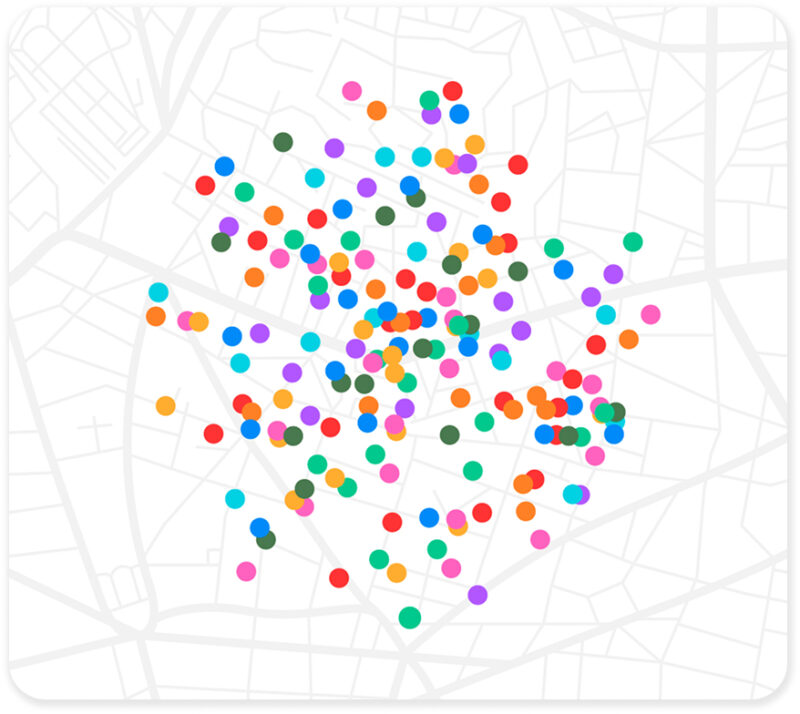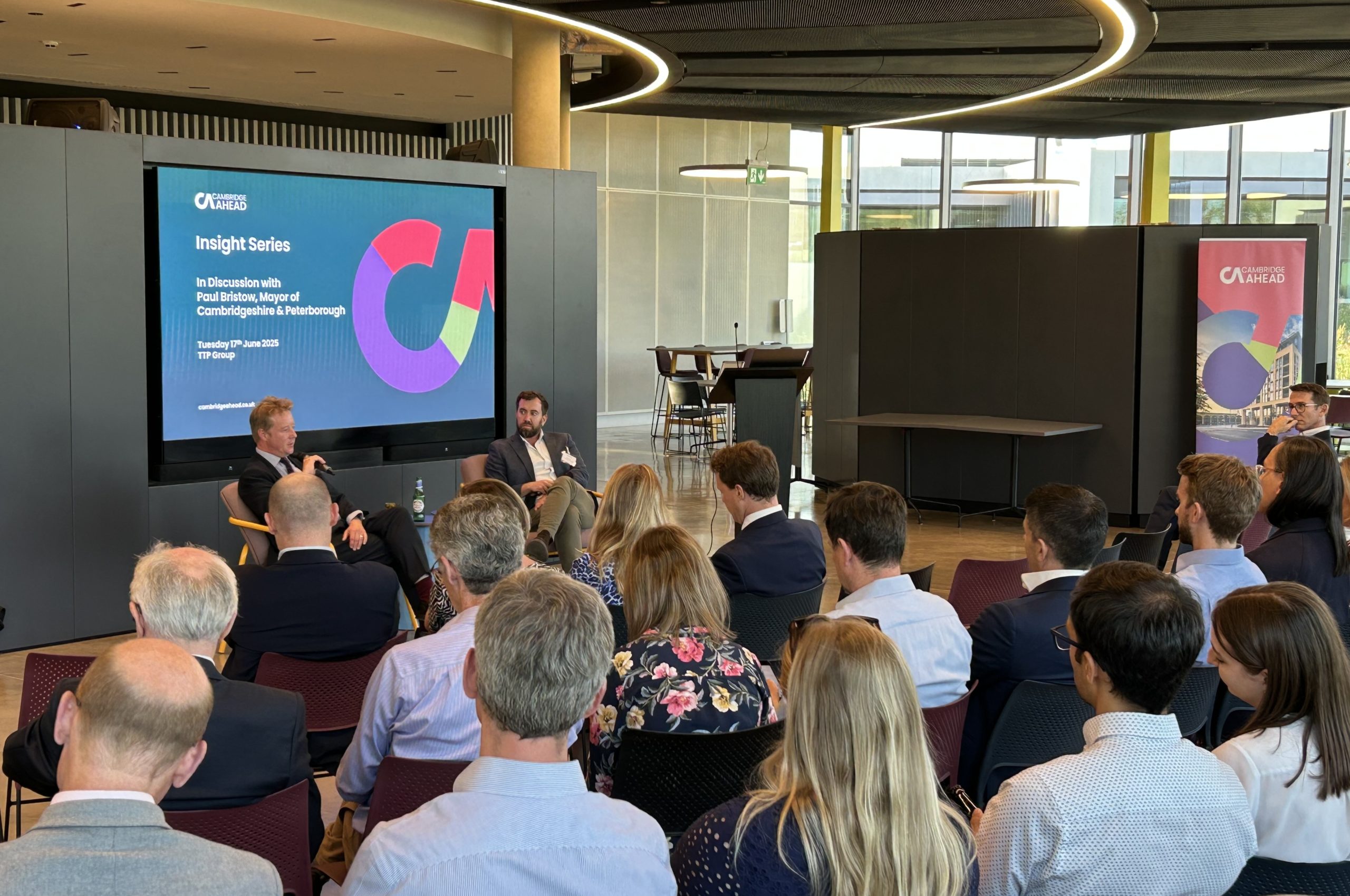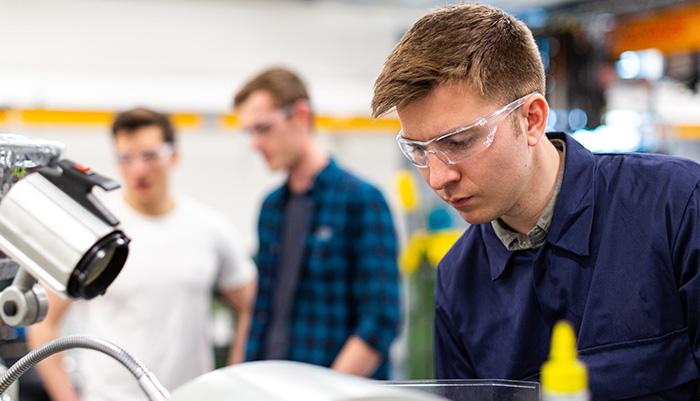Could Cambridge lead the way in pioneering a circular economy?
From tables and chairs, to bricks, and miles of electrical cabling – the list of materials produced during the demolition or retrofit of a building is extensive. Developers and local planners are looking at new and innovative ways of reducing waste and re-using materials.
Creating a ‘circular economy’ – defined by the Greater London Authority as ‘one where materials are retained in use at their highest value for as long as possible and are then reused or recycled, leaving a minimum of residual waste’ – could be the solution.
A Local Conversation with Regional Impact
Earlier this year, the Greater Cambridge Shared Planning service (GCSP) and Cambridge Ahead’s (CA) Young Advisory Committee convened a timely discussion on how to integrate circular economy practices within the local planning process and in future developments.
Emma Davies, Principal Sustainability Officer at the GCSP outlined the need to understand how local projects are adopting circular economy practices, and how they could be incorporated within the region’s planning framework. The GCSP is responsible for developing Greater Cambridge’s Local Plan, which sets out the region’s planning policies and land use until 2045.
Emma Davies opened the roundtable with an overview of the local planning authority’s interest in circular practices: “The issue of the Circular Economy is an area of increasing interest, especially in the context of net-zero carbon and helping to reduce the need to extract raw materials and the manufacture of new building materials. We are keen to understand how best to refine local policy around Circular Economy to help support more sustainable building practices and help support such practices becoming the norm.”
Real-World Projects Show the Way
We were delighted to be joined by regional experts in sustainable development and leaders of projects that have implemented circular practices.
RailPen: Reuse in Practice
If you have arrived in Cambridge by train recently, you will have no doubt seen several developments from the RailPen portfolio. Richard van Lente, Senior Property Asset & Development Manager at RailPen, presented the Botanic House and Mill Yard projects.
Richard provided a detailed overview of the materials retained from the demolition at Mill Yard. These materials have each been carefully catalogued for re-use. For example, the existing structural steel from the demolished shed at the site was dismantled and provided to a company found through the Circular Partnerships Database. Also, the trees that were felled to create the new entrance have been milled, dried and will be repurposed as furniture in the final scheme.
Richard emphasised the importance of a holistic view of sustainability, including the need to reflect on whole-life carbon and embodied carbon as important metrics. Expanding the expected lifespan of a building, for longer than 60-80 years, should be a priority for future builds.
Richard commented that “Increased circular economy thinking in construction is vital if we are to tackle the climate crisis, prevent biodiversity loss and address crucial social needs. Railpen are investing to develop both more sustainable design and more circular construction processes.”
Entopia Building: Embedding circular economy principles
Lucy Bruzzone, Programme Director at the Cambridge Institute for Sustainable Leadership (CISL) presented on the recently refurbished, and ultra-sustainable, Entopia Building.
From the outset, the Entopia project included circular economy principles in the design brief and was guided by a clear ‘project charter’ that set expectations for the architects, contractors and suppliers to prioritise reuse and sustainability.
The Entopia Building is an outstanding national example of how circular economy practices have been implemented. When you enter the building, you are greeted at a front desk which has been sourced from Netflix. Around 40 tonnes of waste has been diverted from landfill and either re-used or recycled. The building has saved 21 tonnes of CO₂e through the use of reclaimed materials such as the photovoltaic (PV) rooftop canopy, lighting, and furniture. That is equivalent to heating 7.8 UK homes for a whole year.
The Entopia Building isn’t just a case study. It’s now been turned into a Living Lab for sustainable innovation across the built environment. CISL invites innovators, industry and academia to join the project to learn from, experiment through and build a community of action around the building.
View Entopia Building presentation
Lucy Bruzzone commented that “Embedding circular economy principles in the design brief and making sure we had buy-in from everyone involved in the project were critically important. As project leaders, we had an important role to play in increasing awareness amongst our contractors and educating on circular practices. We’re now excited to continue our journey through our Living Lab.”
Addressing Barriers and Unlocking Opportunities
Roundtable attendees acknowledged that, despite strong examples, there are national and local barriers that hinder the wider adoption of circular practices:
- A lack of national regulation slows progress.
- Insufficient incentives for developers to prioritise reuse.
- Logistical challenges in transporting salvaged materials increases costs and emissions, alongside complex regulatory requirements which further compound these challenges.
- An ‘all or nothing’ mentality when it comes to circularity and a lack of cohesive policies, making it difficult to holistically consider sustainability priorities for developments.
- Limited awareness and education within the industry.
Ideas for a Circular Cambridge
Participants expressed enthusiasm for creating a circular economy marketplace for Greater Cambridge, a platform where developers and contractors could easily exchange or acquire reusable construction materials. This “one-stop-shop” could reduce waste by improving access to reusable materials and cut carbon emissions locally.
A significant step would be to introduce a circular economy statement for major developments, with light-touch reporting requirements, to embed early-stage thinking in the planning process.
Expanding training and skills development on circular economy principles across the construction and planning sectors would also be an important step, improving awareness, understanding and uptake.
Looking Ahead
We were delighted to convene this initial conversation on circular economy practices to explore how best to integrate these sustainable practices within future developments. As national attention continues to focus on the region’s growth, it is essential that our approach locally includes practical strategies to reduce waste, recycle and reuse materials, and lower carbon emissions.
The sustainability subgroup of CA’s Young Advisory Committee is collating case studies which highlight best practice approaches to implementing a circular economy in Greater Cambridge. We are particularly interested in the following:
- Schemes that have made materials available for community reuse, and the logistics involved in this
- Schemes that have brought together other projects in close vicinity to share materials
Please share your own stories by getting in touch via info@Cambridgeahead.co.uk




